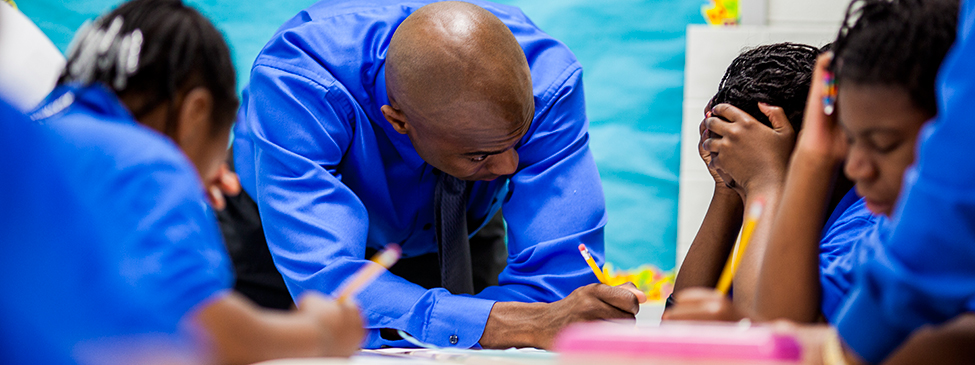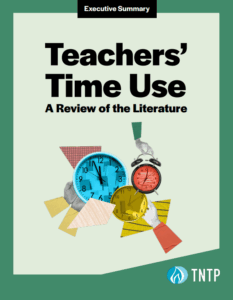Students across the country are heading back to school—many for the first time in almost 18 months. Even as communities struggle to contain the latest surge in infections, it’s a big milestone in the road back from the COVID pandemic.
As school systems look to the future, many are taking a moment to reflect on what they learned during a period of unprecedented disruption. A common refrain among education leaders is that we must think beyond a “return to normal” and finally address the longstanding inequities in our education system that the pandemic laid bare. That work should start with the most important school-based factor in students’ success: the quality of their teachers.
While teacher staffing policies and practices have faded a bit from the education policy conversation in recent years, they remain one of the biggest drivers of inequity in our schools. School systems face perennial teacher shortages, especially for advanced math and science courses and in critical areas like special education and bilingual education. This means hundreds of thousands of students—mainly students of color or from low-income families—start each year without a full-time teacher in one of their classes, or without any opportunity at all to take a course that could make the difference between getting into college or not.
And despite research showing that teachers of color play a crucial role in helping students of color excel, the nation’s teacher workforce remains almost 80 percent white. That means many students of color go their entire K-12 career without once having a teacher who shares their background and cultural identity.
Put simply, we can’t help students recover from the pandemic or create a truly equitable education system without big changes in the way we recruit, train, and hire teachers.
As a first step, K-12 leaders need to call on on education schools and other teacher preparation programs to get serious about fixing their decades-long failure to produce the teachers schools need. That doesn’t mean just producing enough total teachers; it means working collaboratively with school systems to understand the needs in specific grades and subject areas and tailoring their programs accordingly. Policymakers can help by incentivizing partnerships between higher education and K-12 school systems, and by requiring preparation programs to publicly report key data like the diversity of the teachers they produce.
But districts can’t afford to just wait for existing preparation programs to change. They can take control of their teacher pipelines by creating their own in-house certification programs, customized to meet their talent needs at any given moment. For example, several school systems are developing programs that would allow paraprofessionals to become full-time teachers, mostly through on-the-job training. It’s an approach that could fill shortages in key subject areas with experienced educators and double as an investment in workforce development—all while boosting teacher diversity. Policymakers should support the creation of these innovative, lower-cost pathways into the classroom by allowing and supporting alternative certification programs.
Districts also need to think more creatively about how to provide stronger teachers for students when they’re experiencing shortages. Right now, most schools default to hiring long-term substitutes to fill vacancies—teachers who are generally less effective and may not have expertise in the subjects they’re teaching.
The forced experiment with online learning during the pandemic offers new ideas on this front. We’ve seen that online platforms can offer skilled teachers a way to reach far more students than they could within the confines of a typical school day. For example, if a school is struggling to fill a vacancy in AP Physics from the pool of prospective teachers in their community, they could hire a proven educator who lives anywhere in the country to provide live instruction through an online platform—with in-person support staff facilitating the lessons and attending to classroom management.
This would likely require modifications to certification requirements, and few would consider it a better option than in-person teaching. But it’s potentially a far better experience for students than a long-term substitute—or, worse, cutting the course entirely. Online learning could also allow teachers to offer remote lessons on evenings or weekends to reach students who can’t attend during regular hours because of family or other obligations.
Recovering from the calamity of the last 18 months will be tougher than any other challenge schools have faced—there’s no way around it. But it’s also an opportunity to rethink the old “normal” and finally tear down the barriers that keep too many students from getting the great teachers—and educational opportunities—they deserve.








